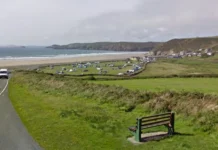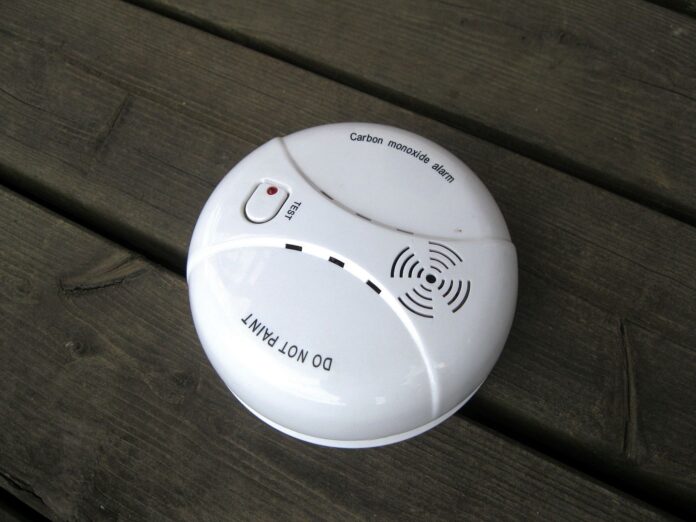Ten million UK homes could be at risk from carbon monoxide (CO) poisoning – RoSPA and Wales & West Utilities
UK dwellers are encouraged to take CO safety seriously ahead of peak home moving season
- One in three UK dwellers have no carbon monoxide alarms in their home
- That could equate to over 10 million households at risk
- Every year, the UK sees around 40 people die from unintentional carbon monoxide poisoning and over 200 seriously ill in hospital.
Over 10 million UK homes[1] could be without a carbon monoxide (CO) alarm in their home, according to worrying new research from The Royal Society for the Prevention of Accidents (RoSPA) and Wales & West Utilities.
Over 2000 of the nation were polled and a third (30 per cent) admit to not having or not knowing if they have a CO alarm anywhere in their home, potentially exposing themselves and their loved ones to the dangers of what’s been dubbed ‘the silent killer.’
Carbon monoxide is a colourless, odourless, tasteless, poisonous gas that is released when any fossil fuel, such as coal, oil, wood, petrol, barbeque charcoal and gas, doesn’t burn properly.
Breathing it in can make you unwell, and it can kill. Even low levels of exposure, over a long period, can cause serious health issues. That’s why installing a carbon monoxide alarm is an essential aspect of home safety. And as ‘moving house season’ is officially in full swing, RoSPA and Wales & West say there’s never a better time to check your defences against carbon monoxide.
CO poisoning happens when you breathe in even small amounts of this poisonous gas. Every year around 40 people die and over 4,000 become seriously ill as a result of carbon monoxide poisoning.
The most common symptom of carbon monoxide poisoning are:
- Headache
- Dizziness
- nausea (feeling sick) and vomiting
- tiredness and confusion
- stomach pain
- shortness of breath and difficulty breathing
Symptoms of carbon monoxide poisoning can be like those of food poisoning and the flu. However, unlike the flu, carbon monoxide poisoning does not cause a high temperature (fever).
Philip Le Shirley, Product Safety Advisor at RoSPA, said:
“We urge everyone to take this moment to assess their carbon monoxide defences, which crucially involves ensuring there is a functioning carbon monoxide alarm near to every fuel burning appliance in the home.
“While landlords should provide one, not all do – so it is vital to take stock and ensure you have what you need in place to keep yourself and your loved ones safe from the silent killer.”
Clive Book, Head of Operations at Wales & West Utilities said:
“Our research shows that around one in three homes do not have a carbon monoxide alarm, which is why our partnership with RoSPA is so crucial to enable us to share vital safety messaging about what is commonly touted as ‘the silent killer”.
“We urge all householders to visit the carbon monoxide safety hub on RoSPA’s website to keep themselves and their loved ones safe.”
What does the law say about who is responsible for carbon monoxide alarms?
England
Since October 1, 2022, new regulations required carbon monoxide alarms in all rented and new build properties with fixed combustion appliances (excluding gas cookers). If a fixed combustion appliance is installed, landlords in both private and social sectors must repair or replace faulty alarms when notified.
Wales
Since December 1, 2022 the Renting Homes (Wales) Act 2016, under Fitness for Human Habitation (FFHH) regulations, mandates landlords to ensure working CO alarms are fitted in all properties with gas, oil-fired, or solid fuel-burning appliances.
Wales (and England) are also subject to adhering Building Regulations Document J – England and Wales, which states that any new or replacement solid-fuel appliances in England and Wales require a BS EN 50291 Kitemarked Carbon Monoxide alarm. These alarms should be fitted in the same room as the appliance and can be mains or battery powered.
Scotland
Since February 1, 2022, all homes, whether rented or owned, must have a carbon monoxide alarm in rooms with a fixed combustion appliance or a flue (excluding cooking appliances). If you’re renting, your landlord is responsible for providing the alarm. The alarms must meet British Standards (EN 50291-1) and have a sealed battery for tamper-proof security.
- Ensure a smoke alarm on each floor with living accommodation, a requirement since 2015
- Equip a carbon monoxide alarm in rooms with fixed combustion appliances, such as boilers (excluding gas cookers)
- Promptly repair or replace faulty smoke and carbon monoxide alarms. Local authorities can impose fines for non-compliance.
Northern Ireland
Since October 31, 2012, all homes in Northern Ireland with new fossil fuel appliances must have CO alarms, following changes to The Building Regulations (Northern Ireland) 2012. Additionally, the recent Private Tenancies Act, effective April 27, 2022, requires landlords in Northern Ireland to install and repair carbon monoxide alarms in privately rented homes.
Holiday Rentals
Regulations for carbon monoxide alarms in holiday rentals vary by country. In England, landlords must equip alarms in rooms with fixed combustion appliances, and non-compliance can result in fines imposed by local authorities. Failure to comply may result in a fine of up to £5,000. Always check your holiday accommodation for a carbon monoxide alarm.
In Scotland, the Tolerable Standard, enacted this year, mandates carbon monoxide alarms in all homes.
In Wales, Fitness for Human Habitation Regulations requires landlords to install carbon monoxide alarms in rooms with gas, oil, or solid fuel-burning appliances.
- What type of carbon monoxide alarm is recommended? Like smoke alarms, these should be chosen based on your or your building’s needs, as well as complying with British Standards BS 50291. Our advice? Opt for sealed battery alarms
- Where should alarms be strategically located? A carbon monoxide alarm should be placed in every room with a fixed combustion appliance. If this isn’t the case, contact your landlord
- Is battery replacement considered a repair, and who handles it? Landlords are tasked with repairs. During tenancy, tenants manage battery replacements, while landlords address faulty alarms
- How should tenants conduct alarm testing? Testing is straightforward; follow manufacturer instructions. Landlords can provide demonstrations or written instructions to tenants
- What steps should tenants take if alarms aren’t functioning? Tenants replace batteries, and persistent issues should be reported to the landlord
- Have your gas appliances been serviced this year? Your landlord should arrange for a gas engineer on the Gas Safe Register to complete this. Also, your landlord should only consult with professionals when hired to annually service any other fossil-fuel burning appliances, such as oil or coal burning stoves.
For further information on carbon monoxide safety, please visit RoSPA and Wales & West’s carbon monoxide hub.
Help keep news FREE for our readers
Supporting your local community newspaper/online news outlet is crucial now more than ever. If you believe in independent journalism, then consider making a valuable contribution by making a one-time or monthly donation. We operate in rural areas where providing unbiased news can be challenging. Read More About Supporting The West Wales Chronicle
























